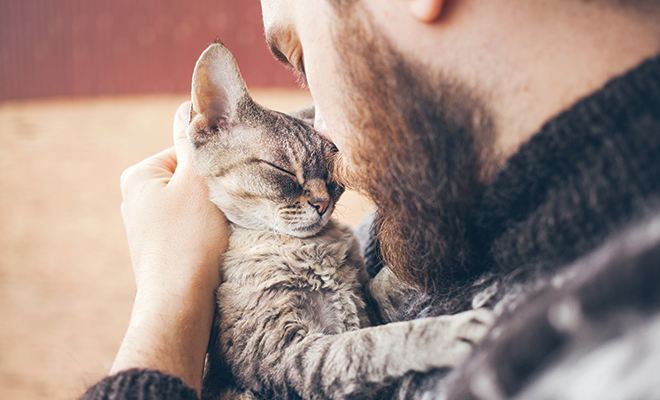
How to Train Your Cat!
For years, I believed the saying, “You can’t train cats.” Why not? “Because they are cats.”
Then, on a trip to a theme park, I saw a show in which small dogs and cats interacted to put on a spectacular show. The cats would pop up from hidden traps, run across the stage and disappear on cue, with never a cross word between the dogs and cats. Trained to perform. Yes, ma’am, they were trained to perfection.
Yet, cats are very independent creatures, not at all like dogs. Cats learned to be around humans when they learned that human crops attracted food sources (rodents) that the cats could eat. In this way, they are unlike dogs. Cats have not been domesticated to obey humans’ orders, according to Atsuko Saito and Kazutaka Shinozukain, authors of Animal Cognition. Scientists have determined that after 9,000 years living with humans, cats are only semi-domesticated.
How do you train cats, I wondered? First of all, recognize that they are cats and not dogs. Cats are more independent than dogs and proud of it.
Basic Etiquette
Cats expect to be treated well. They do not like to be scolded, yelled at or shaken. Reward the cat (or kitten) with a piece of their favorite kibble when they do something correctly. If you must correct a behavior, use a water spray or make a sharp rap on the table.
With a new kitten, one of the first things to teach her is to use the litter box. Hopefully, mama cat has already taught this behavior! Praise her when she uses the box and remember, accidents will happen. You should have one more box than cats. Keep the litter box clean. Many cats won’t use it if it’s dirty.
Another behavior to teach the young kitten is to be handled. Pick her up gently and talk quietly to her. If she struggles to get down, continue to hold her until she settles down. Once she has relaxed, tell her what a good cat she is, and then you can put her down. Never reinforce bad behavior by giving in to her struggles.
Play biting is a game kittens like to indulge in. If she bites your hand, grit your teeth and stop the session. Do not jerk your hand away because you will reinforce her bad behavior.
Scratching furniture is another undesirable behavior. Use positive reinforcement to avoid this behavior. Buy or make a scratching post for the kitten. Cats like rough surfaces, so a post covered with sisal rope is ideal. Be sure the post is mounted on a stable base that won’t tip over. Play around the area where the post is until the cat is thoroughly familiar with its purpose. Give lots of praise or kibble rewards to reinforce the good behavior. Should the furniture still be a favorite scratching place, place a piece of heavy plastic over the furniture or use an anti-odor product until she gets the message.
Clickers
Many top professionals use clickers to train their cats. Use a clicker to indicate a correct behavior. A target stick is optional, but it is a clever way to get the cat to concentrate on the desired behavior. Training sessions should be short, around five minutes each. Stop the session at any sign of aggressive behavior or when the cat loses interest.
Begin the session by marking desired behavior with a single click and a piece of favorite kibble. As the session progress, you can discontinue the kibble and use only praise.
When using a target stick, teach the cat to follow the target stick. Place the target close to the cat’s nose. Click immediately when the cat sniffs the target stick to reward the behavior. You can place a bit of wet food on the end of the target stick to keep the cat focused on it. Next, move the target stick to the side of the cat so she will have to turn to follow the stick. When she sniffs it, click and reward. As your training session continues, move the target stick further and further away as the cat learns to follow the target stick.
One of the easiest tricks to teach the cat is to sit. Hold the target stick above her head and say, “Sit.” If you are not using a target stick, move the treat over the cat’s head and repeat “Sit.” As soon as she sits, click and reward.
Following these techniques, cats can be trained to sit, enter their carriers, come when called, lie down and many other desirable behaviors, but think about it. Do you want your cat to do all the tricks a dog can do? Part of a cat’s mystique is their noble independence. Why would you want to change that? ■
Sources: vetstreet.com, catsinternational.org, perfectpaws.com, hillspet.com and adventurecats.org.







